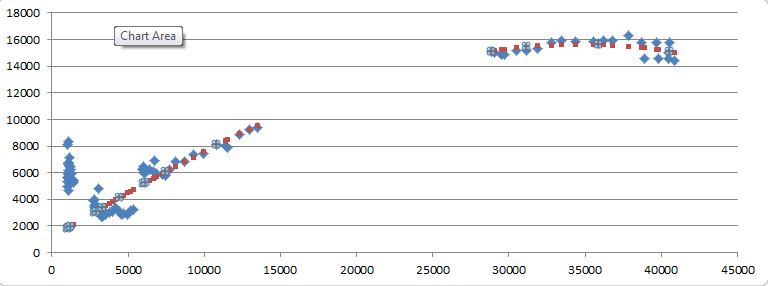
Coming Up for Air by George Orwell
My rating: 5 of 5 stars
Before starting to read Coming Up for Air, I was 150 pages into a lesser known Dickens called Martin Chuzzlewit. I had resigned myself to the pompous 19th Century style, with its improbably overwritten dialogue and run-on sentences. After all, it was a Dickens, and that meant the payoff would be a good story.
Well, there is a reason why Chuzzlewit was lesser known. 140 years before the Fonz was doing it on waterskis, Dickens managed to jump a rather ugly shark – petty personal grievances arising from his America trip, and the even more unforgivable sin of writing what he did not know. And as the story of Chuzzlewit became less engaging, the prose appeared to grow more overwritten and tortorous by the page.
Coming out of this and into a nice George Orwell felt like, well, coming up for air. It also put Orwell’s style in just the right social context. He was among those post-WWI writers whose plain prose stood in deliberate counterpoint to the exclusive and pretentious verbosity of the Victorians, for whom ‘common’ was a synonym of ‘cheap’. For Orwell, a plainly written novel was in itself a political statement: the socialism of the written word.
This theme is also perfectly echoed in the book itself, which tells the story of an ordinary middle aged man with a deliberately ordinary name – George Bowling – whose life spans the trenches of the Great War. As his youth unfolds in memory, the reader is taken through the great changes that redefined England in the early 20th Century. The social: A shopboy finding a higher place in the new social order, with its illusion of meritocracy, and ‘iron cage’ economy. The physical: The engorgement of bucolic villages by industry, the surburban sprawl of London, turning the South of England into the ugly maze of A-roads, roundabouts and semi-detatched houses we all know and hate.
Coming Up for Air is also a deeply personal story, unlike Orwell’s more overtly political (and better known) works. Drawing on personal experience, the author manages to tread the perilous line of a flawed protagonist; one who yet remains human enough for us to like. That’s not easy to do. But Orwell goes further – he crafts a tale that is captivating despite having no real plot beyond whether or not George Bowling will catch a fish.
Yet the novel is most memorable not for its retrospective on the first four decades of the 20th Century, but rather for its precience concerning the fifth. At various times during my read, I had to return to the copyright page to check that the book truly was written in 1940. The foreshadowing of the Second World War was so uncanny it left the impression that Orwell had written it 8 years later, when the dust had begun to settle. This in itself makes the book compelling, especially for today’s reader, whose spidey sense is perhaps tingling with the same grim forebodings.
In summary, if you were to read only one book that covers the great social change in England caused by the wars, this would be the one I would recommend.
View all my reviews





